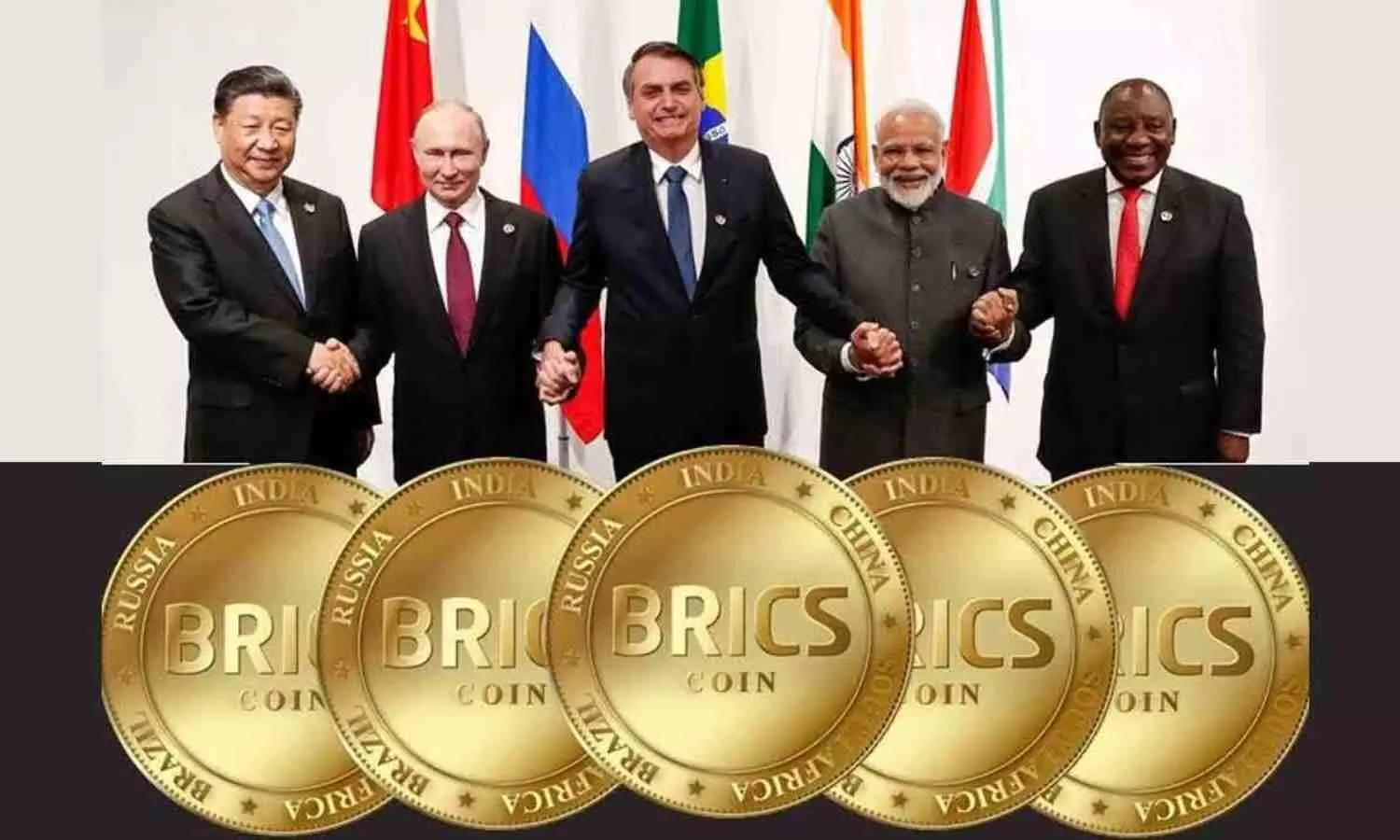India’s Strategic Approach to BRICS Common Currency: Benefits, Risks
India’s careful evaluation of BRICS common currency focuses on trade growth, reduced dollar dependency, and safeguarding monetary sovereignty.
India’s Strategic Approach to BRICS Common Currency: Benefits, Risks

As global economic dynamics shift, the idea of a common currency among BRICS nations—Brazil, Russia, India, China, and South Africa—has resurfaced. Proponents argue that such a currency could reduce reliance on the US dollar, boost intra-BRICS trade, and enhance the economic influence of these emerging markets. However, India's involvement in this ambitious proposal must be evaluated through the lens of its own economic objectives, policy framework, and geopolitical context.
India is positioning itself to become a $5 trillion economy within the next few years, while facing a rapidly evolving global environment shaped by digital advancements, geopolitical shifts, and new trade alliances. The Reserve Bank of India (RBI) plays a pivotal role in managing the nation’s monetary policy, focusing on controlling inflation and ensuring financial stability. India’s broader goals include enhancing trade competitiveness, attracting foreign investments, and asserting a stronger presence in global economic forums.
In 2022, India’s trade with BRICS nations reached approximately $100 billion. A shared currency could mitigate challenges such as exchange rate volatility and high transaction costs, providing much-needed relief to small and medium-sized enterprises (SMEs). These businesses often struggle with the expenses of currency hedging, and the elimination of such barriers could open new markets and expand export opportunities. Additionally, with the current dominance of the US dollar, India remains vulnerable to external shifts in American monetary policies or sanctions. A BRICS currency might reduce this dependency and offer more financial flexibility.
India’s foreign exchange reserves stood at approximately $644.39 billion as of December 2023, which could be utilized more efficiently by reducing the need for dollar holdings. Furthermore, playing a central role in a BRICS-wide currency could bolster India's global standing, aligning with its broader strategy of advocating for emerging markets' interests in international governance.
While a BRICS common currency presents several advantages, there are significant challenges. India’s current monetary policy is finely tuned to its domestic economic conditions, particularly its inflation target of around 4 per cent with a ±2 per cent tolerance band. Aligning India’s monetary policy with other BRICS countries—such as Brazil, where inflation in 2023 was around 4.59 per cent, or Russia, where it exceeded 5.86 per cent—could constrain the RBI’s ability to manage local economic challenges effectively.
Moreover, the implementation of a shared currency often requires strict fiscal protocols to ensure stability, which might limit India’s discretion in funding domestic development projects. India’s fiscal deficit was around 6.4 per cent of GDP in 2022–2023, largely due to public spending on infrastructure and social programs. Uniform fiscal guidelines could limit the nation’s ability to prioritize critical sectors, particularly if they were at odds with the policies of other BRICS members.
The diverse economic profiles within BRICS further complicate the prospects for a unified currency. China’s economy, for instance, is vastly larger than India’s, making it the dominant player in the bloc. If monetary policies were skewed in favor of China’s economic strength, smaller economies like India might be left at a disadvantage. The Eurozone crisis offers a cautionary tale of the potential risks involved in applying a single monetary policy to countries with differing economic circumstances, without a robust mechanism for fiscal transfers or debt mutualization.
India’s relationships with BRICS members, particularly China and Russia, are shaped by ongoing geopolitical tensions. Border disputes with China and the fallout from the Ukraine conflict pose risks to the stability of a shared currency. Political trust among BRICS members is essential for the success of any common currency initiative, and the current global environment makes such trust difficult to achieve.
Rather than rushing into a uniform currency, India might pursue a more calibrated approach that expands the international use of the rupee. Initiatives such as the RBI's 2022 Framework for Facilitating Trade in INR aim to encourage trade and settlement in rupees, reducing reliance on the US dollar without the complexities of a shared currency. Additionally, India can work with the New Development Bank (NDB) to promote local currency financing for large-scale infrastructure projects, enhancing economic integration within BRICS.
India could also modernize its cross-border payment systems, such as integrating its Unified Payments Interface (UPI) with similar systems in BRICS nations. This could expedite transactions and strengthen financial security across the region. By focusing on regulatory alignment and collaborating on areas like anti-money laundering and banking oversight, India can foster the trust necessary for deeper economic cooperation within BRICS.
India’s participation in a BRICS common currency could enhance trade facilitation and reduce dependence on the dollar, but this comes with significant risks to monetary sovereignty, fiscal discipline, and political stability. Drawing lessons from the Eurozone crisis, a gradual approach may be more practical. India should focus on expanding the rupee’s international footprint, investing in payment technologies, and coordinating financial regulations to promote deeper financial integration without compromising its autonomy.
By pursuing these steps, India can increase its global influence and strengthen trade ties with BRICS nations, while maintaining the flexibility necessary to address its domestic developmental needs. Ultimately, policymakers must navigate this complex issue carefully, weighing the potential benefits against the geopolitical and economic risks involved.

